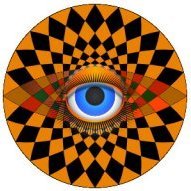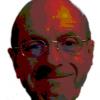
sumneuron
-
Posts
76 -
Joined
-
Last visited
Reputation Activity
-
 sumneuron got a reaction from Fun Art Sam in 'Replace Colour' - How? (Affinity Photo)
sumneuron got a reaction from Fun Art Sam in 'Replace Colour' - How? (Affinity Photo)
Hi I just want to state that while the color replacement brush works fine when one doesn't want to mask and recolor certain parts, I would still very much like to have just an easy way to say take this rgb / hex value and make it this other one everywhere. Please make this a feature.
-
 sumneuron got a reaction from Pixelated in 'Replace Colour' - How? (Affinity Photo)
sumneuron got a reaction from Pixelated in 'Replace Colour' - How? (Affinity Photo)
@HarryMcGovern yes, that would be nice. In case, for whatever reason, let's say you can't have #FF0000 anywhere in your image and rather than hunting down those pixels, you can just swap them to one off.
-
 sumneuron got a reaction from Pixelated in 'Replace Colour' - How? (Affinity Photo)
sumneuron got a reaction from Pixelated in 'Replace Colour' - How? (Affinity Photo)
Hi I just want to state that while the color replacement brush works fine when one doesn't want to mask and recolor certain parts, I would still very much like to have just an easy way to say take this rgb / hex value and make it this other one everywhere. Please make this a feature.
-
 sumneuron got a reaction from TomWhite3 in Problem with UNDO
sumneuron got a reaction from TomWhite3 in Problem with UNDO
what might cause a Affinity Design to stop tracking history all together
-
 sumneuron got a reaction from firstdefence in Texture Clipping Mask with single object across many layers?
sumneuron got a reaction from firstdefence in Texture Clipping Mask with single object across many layers?
@firstdefence yes, but I can't click to get there. Have to start in layers panel
-

-
 sumneuron reacted to JimmyJack in Texture Clipping Mask with single object across many layers?
sumneuron reacted to JimmyJack in Texture Clipping Mask with single object across many layers?
@sumneuron (et al)
Select all the elements and use the Bitmap fill option in the Gradient tool.
(You might have to nudge a handle to get it to recognize the area as the sum of all the parts. Otherwise it might want to resize the fill to fit each shape individually.)
If you want to move a shape/shapes after the fill without moving the background (a la "lock children") use the node tool.
Yes this means that shape objects will need to be converted to curves and you will loose the individual shape parameter options.
The move tool will move a shape with the image.
-

-
 sumneuron got a reaction from Alfred in Texture Clipping Mask with single object across many layers?
sumneuron got a reaction from Alfred in Texture Clipping Mask with single object across many layers?
@Alfred see the screen shot it is a minimal example.
For structural reasons I have different layers (some nested) / groupings of curves. Not every curve in the document needs the texture, but many do.
I could copy and paste the texture layer and make it a child of each curve (and the curve would act as a vector clipping mask for the texture). However doing so means that if I want to change the texture, I have to update it everywhere which is tedious.
-
 sumneuron got a reaction from CircularWebs in How to make semi-realistic faces via gradient / gaussian blur shading for pure vector art?
sumneuron got a reaction from CircularWebs in How to make semi-realistic faces via gradient / gaussian blur shading for pure vector art?
I generally use Affinity Designer for producing simple icons as a pay-once alternative to Adobe Illustrator. After getting pretty ok at doing so, I want to branch out and start making digital art. I have learned mostly just by fiddling and listening to some youtube channels, but also asking others who make digital art. Most of whom use pixel tools to produce the semi-realistic shading and effects. After trying that (and getting some ok results for my first attempt - first image) I wanted to try just making pure vector art using gradient shading / layered gaussian blurs (second image). Neither of these images are particularly good, or complete, but ok enough to encourage me to try and improve. Also the pixel method result in like 1000 layers of small pixel elements with multiple layer effect and small amounts of transparency, whereas the vector version was quicker.
So I am asking if someone could help with figuring out how to make a decent human face using only vector tools. I know (heard from others) that lips and eyes can be pretty hard and that generally one should learn how to draw first - prior to trying to shade digitally ( to better understand lighting and such).
I ask specifically about vector tools because often the crisp nature of vector elements often look specifically out of place.
I can post a layer by layer (only 23 so far) for the vector face to better document how I worked up to where it is.


